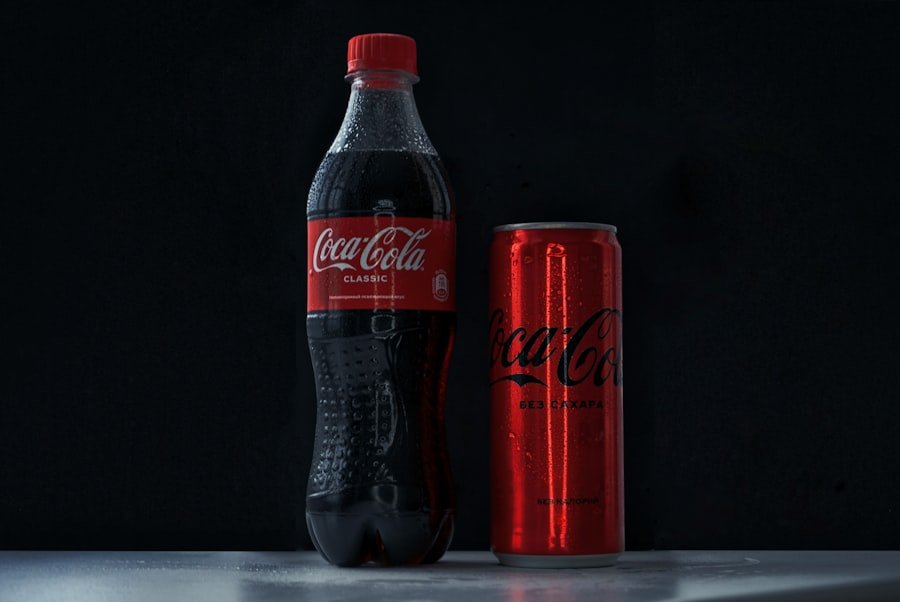Brand awareness is the cornerstone of any successful marketing strategy. It refers to the extent to which consumers recognize and recall a brand, its products, or services. This recognition can manifest in various forms, from a simple logo or tagline to a more complex understanding of the brand’s values and offerings.
In an increasingly crowded marketplace, where consumers are bombarded with choices, brand awareness serves as a critical differentiator. It is not merely about being known; it’s about being remembered and preferred. To grasp the full scope of brand awareness, consider the two primary dimensions: brand recognition and brand recall.
Brand recognition occurs when consumers can identify a brand upon seeing it, while brand recall refers to the ability to retrieve a brand from memory when prompted by a product category. For instance, when someone thinks of soft drinks, Coca-Cola often springs to mind due to its extensive marketing efforts and iconic branding. This duality of awareness is essential for marketers aiming to create lasting impressions that translate into consumer loyalty.
Key Takeaways
- Brand awareness is the level of recognition a brand has among its target audience.
- Brand awareness is important because it helps to build trust, credibility, and loyalty with customers.
- Brand awareness differs from lead generation in that it focuses on creating familiarity with the brand, while lead generation focuses on capturing potential customers’ interest.
- Brand awareness plays a crucial role in marketing by influencing consumer purchasing decisions and creating a competitive advantage for the brand.
- Lead generation is essential in marketing as it helps to identify and capture potential customers who are interested in the brand’s products or services.
The Importance of Brand Awareness
The significance of brand awareness cannot be overstated. It lays the groundwork for customer trust and loyalty, which are vital for long-term business success. When consumers are familiar with a brand, they are more likely to choose it over competitors, even if the latter offer similar products at lower prices.
Moreover, brand awareness fuels word-of-mouth marketing, one of the most powerful forms of promotion. When customers recognize and trust a brand, they are more inclined to share their positive experiences with others.
This organic promotion can significantly amplify a brand’s reach without incurring additional marketing costs. In essence, building brand awareness is not just about visibility; it’s about creating a community of advocates who will champion your brand in their networks.
How Brand Awareness Differs from Lead Generation

While brand awareness and lead generation are interconnected, they serve distinct purposes within a marketing strategy. Brand awareness focuses on creating familiarity and recognition among potential customers, whereas lead generation is about capturing interest and converting that interest into actionable leads. In simpler terms, brand awareness is about getting your name out there; lead generation is about getting potential customers to take the next step toward making a purchase.
To illustrate this difference, consider a company launching a new product. Their initial marketing efforts may center around building brand awareness through advertising campaigns, social media engagement, and public relations efforts. Once consumers are familiar with the product and its benefits, the company can then pivot to lead generation tactics—such as offering free trials or downloadable content—to encourage potential customers to provide their contact information or engage further with the brand.
The Role of Brand Awareness in Marketing
Brand awareness plays a pivotal role in shaping consumer perceptions and influencing purchasing decisions. It acts as the foundation upon which all other marketing efforts are built. Without a solid level of awareness, even the most innovative products can struggle to gain traction in the market.
Marketers must prioritize brand awareness initiatives to ensure that their target audience recognizes and understands their offerings. Additionally, brand awareness enhances the effectiveness of other marketing strategies. For example, when consumers are already familiar with a brand, they are more likely to respond positively to targeted advertising campaigns or promotional offers.
This synergy between brand awareness and other marketing tactics can lead to higher conversion rates and improved return on investment (ROI). In this way, investing in brand awareness is not just an expense; it’s a strategic move that amplifies the impact of all subsequent marketing efforts.
The Role of Lead Generation in Marketing
Lead generation is equally crucial in the marketing landscape, serving as the bridge between awareness and conversion. It involves identifying potential customers who have shown interest in a product or service and nurturing them through the sales funnel until they are ready to make a purchase. Effective lead generation strategies can significantly enhance a company’s sales pipeline and drive revenue growth.
In today’s digital age, lead generation has evolved beyond traditional methods like cold calling or direct mail. Marketers now leverage content marketing, social media campaigns, and targeted advertising to attract leads. For instance, offering valuable resources such as eBooks or webinars can entice potential customers to share their contact information in exchange for insights that address their pain points.
This approach not only generates leads but also positions the brand as an authority in its field.
Strategies for Building Brand Awareness

Building brand awareness requires a multifaceted approach that combines creativity with strategic planning. One effective strategy is leveraging social media platforms to engage with your audience directly. Brands can create compelling content that resonates with their target demographic while encouraging shares and interactions.
For example, Nike’s “Just Do It” campaign not only promotes its products but also inspires consumers by aligning with their aspirations. Another powerful tactic is influencer marketing. Collaborating with influencers who align with your brand values can exponentially increase your reach and credibility.
When an influencer endorses your product, it lends authenticity and trustworthiness that traditional advertising often lacks. Brands like Glossier have successfully utilized this strategy by partnering with beauty influencers who genuinely love their products, resulting in increased visibility and sales.
Strategies for Generating Leads
Generating leads requires a strategic focus on capturing interest and nurturing relationships. One effective method is implementing targeted email marketing campaigns that provide personalized content based on user behavior and preferences. By segmenting your audience and tailoring messages accordingly, you can significantly increase engagement rates and drive conversions.
These pages should feature clear calls-to-action (CTAs) and compelling offers that encourage visitors to provide their information in exchange for valuable resources or exclusive access. For instance, HubSpot’s free marketing tools attract leads by offering valuable insights while simultaneously showcasing their expertise in inbound marketing.
Measuring Brand Awareness
Measuring brand awareness can be challenging but is essential for understanding the effectiveness of your marketing efforts. One common method is conducting surveys that assess consumer recognition and recall of your brand compared to competitors. These surveys can provide valuable insights into how well your branding resonates with your target audience.
Another effective approach is analyzing social media metrics such as engagement rates, shares, and mentions. Tools like Google Analytics can also help track website traffic sources to determine how many visitors come from branded searches versus non-branded searches. By combining qualitative and quantitative data, marketers can gain a comprehensive view of their brand’s visibility and make informed decisions about future strategies.
Measuring Lead Generation
Measuring lead generation success involves tracking various metrics that indicate how effectively you are capturing interest and converting prospects into leads. Key performance indicators (KPIs) such as conversion rates, cost per lead (CPL), and lead quality should be monitored regularly to assess the effectiveness of your strategies. For instance, analyzing conversion rates from specific campaigns can reveal which channels are most effective at generating leads.
If you notice that certain social media platforms yield higher conversion rates than others, you can allocate resources accordingly to maximize your lead generation efforts. Additionally, tracking lead quality—such as how many leads ultimately convert into paying customers—can provide insights into refining your targeting strategies for better results.
Integrating Brand Awareness and Lead Generation
Integrating brand awareness and lead generation strategies is crucial for creating a cohesive marketing approach that drives results. When these two elements work in harmony, they create a powerful synergy that enhances overall effectiveness. For example, a strong brand presence can make lead generation efforts more fruitful by ensuring that potential customers are already familiar with your offerings when they encounter your lead capture initiatives.
To achieve this integration, marketers should ensure that their messaging aligns across all channels—whether it’s social media posts aimed at building awareness or email campaigns designed for lead nurturing. Consistency in branding not only reinforces recognition but also builds trust among consumers, making them more likely to engage with your lead generation efforts.
The Impact of Brand Awareness and Lead Generation on Business Success
The interplay between brand awareness and lead generation has profound implications for business success. Companies that prioritize both elements are better positioned to capture market share and foster customer loyalty over time. A strong brand presence not only attracts leads but also cultivates an environment where those leads are more likely to convert into loyal customers.
Furthermore, businesses that effectively integrate these strategies often experience enhanced customer lifetime value (CLV). When consumers feel connected to a brand they recognize and trust, they are more likely to make repeat purchases and advocate for the brand within their networks. This cycle of awareness leading to engagement—and ultimately loyalty—creates a sustainable growth model that propels businesses forward in competitive markets.
In conclusion, understanding the nuances of brand awareness and lead generation is essential for any marketer aiming for long-term success. By recognizing their distinct roles while also appreciating their interdependence, businesses can craft strategies that not only elevate their visibility but also drive meaningful engagement with potential customers. As we move forward in an ever-evolving marketplace, those who master this balance will undoubtedly emerge as leaders in their industries—shaping consumer perceptions and driving growth in ways that resonate deeply with their audiences.
In the realm of digital marketing, understanding the distinction between brand awareness and lead generation is crucial for crafting effective strategies. While brand awareness focuses on making your brand known to a wider audience, lead generation is about converting that awareness into actionable customer interest. For businesses looking to enhance their marketing efforts, it’s essential to integrate both elements seamlessly. A related article that delves into optimizing marketing strategies through paid advertising can be found here. This article provides insights into managing paid advertising campaigns, which can be a powerful tool in both building brand awareness and generating leads.
FAQs
What is brand awareness?
Brand awareness refers to the extent to which consumers are familiar with the distinctive qualities or image of a particular brand. It measures how well a brand is recognized by potential customers and is an important factor in consumer decision-making.
What is lead generation?
Lead generation is the process of identifying and cultivating potential customers for a business’s products or services. It involves capturing interest in a product or service in order to develop a sales pipeline.
What is the difference between brand awareness and lead generation?
The main difference between brand awareness and lead generation is their focus. Brand awareness is about making a brand known and recognized, while lead generation is about identifying and capturing potential customers for sales.
How do brand awareness and lead generation work together?
Brand awareness and lead generation are interconnected. A strong brand awareness can make lead generation efforts more effective, as potential customers are more likely to engage with a brand they are familiar with. Conversely, lead generation efforts can help to increase brand awareness by reaching new potential customers.
Why are brand awareness and lead generation important for businesses?
Brand awareness is important because it can influence consumer purchasing decisions and build brand loyalty. Lead generation is important because it helps businesses identify potential customers and drive sales. Both are essential for the success and growth of a business.



